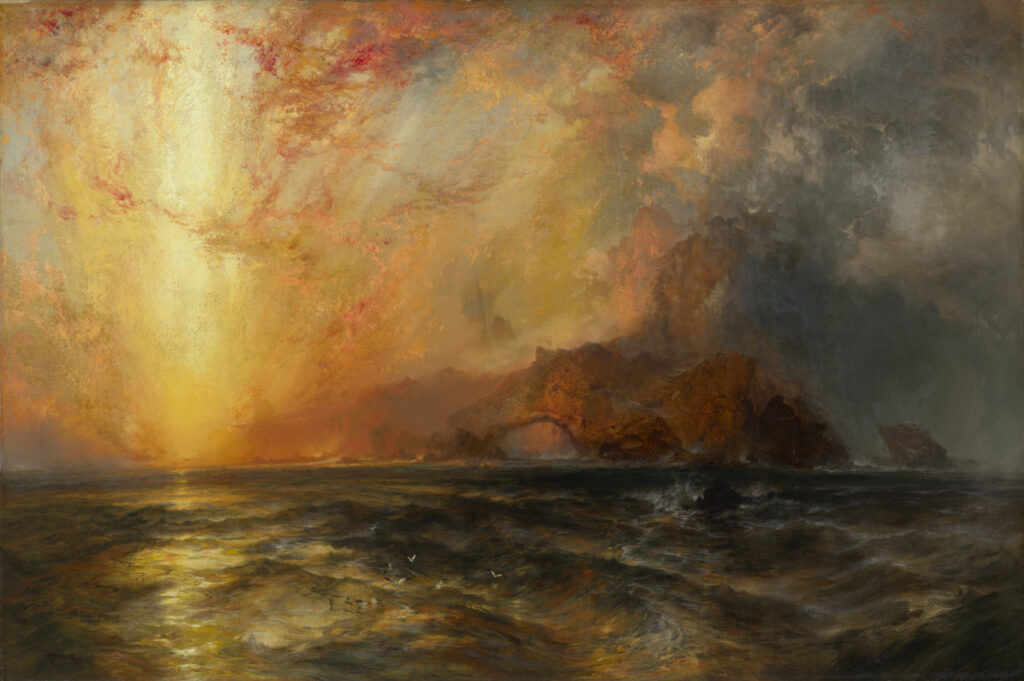“Fiercely the red sun descending/Burned his way along the heavens” (work of art)
Artwork Info
Key Ideas
- This landscape painting depicts a sunset scene at the Pictured Rocks of Lake Superior, in Michigan.
- It was inspired by a painting by Joseph M. W. Turner (The Slave Ship) and an epic poem by Henry Wadsworth Longfellow (The Song of Hiawatha).
- The title of the painting is two lines from Longfellow’s poem.
- Thomas Moran was a landscape painter who often depicted idealized (perfect or better than in reality) views of the American West.
- Moran painted this scene in the time of North American colonialism, when Native Americans were being forced out of their homelands by white settlers.
Learn More
This painting was inspired by Joseph Turner’s painting The Slave Ship and Henry Wadsworth Longfellow’s poem The Song of Hiawatha. In real life Hiawatha was a Native American chief of the Ojibwa people. In Longfellow’s poem Hiawatha travels west to fight the man who killed his great grandfather. Many 19th-century artists created works inspired by The Song of Hiawatha. The poem is a story based on folklore rather than the actual events of Hiawatha’s life.
Thomas Moran often traveled to the western United States to sketch the scenery. He later developed his field sketches into landscape paintings. He gained national recognition for his paintings of the Yellowstone region. Moran traveled to Michigan to create his preliminary drawings for this painting. It depicts the Pictured Rocks of Lake Superior where Longfellow’s poem took place. The title of this painting is made up of two lines from The Song of Hiawatha. These lines tell the story of Hiawatha leaving at sunset to avenge his ancestor’s death.
Moran created this painting during the era of North American colonialism. This term refers to Native Americans being forced out of their homelands by white settlers. Many white Americans believed that Native Americans were uncivilized. They assumed that western lands were free for the taking. This attitude is evident in many American landscape paintings created during that time.
Additional Resources
Resources for Teachers
- Read an article about Thomas Moran.
- Read Canto IX of The Song of Hiawatha (the inspiration for this painting).
- Read an article about one of Moran’s best-known paintings, Mountain of the Holy Cross.
- Watch a video about the loss of Native American land.
Resources for Students
- Read a short article about the Pictured Rocks of Lake Superior.
- View a painting by Joseph Turner and compare it to Moran’s painting.
- Read a paragraph about Thomas Moran and view more of his paintings.

